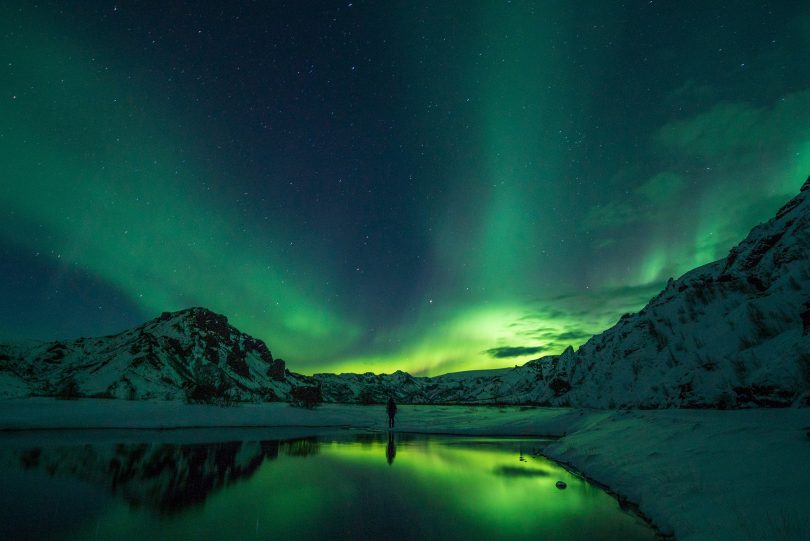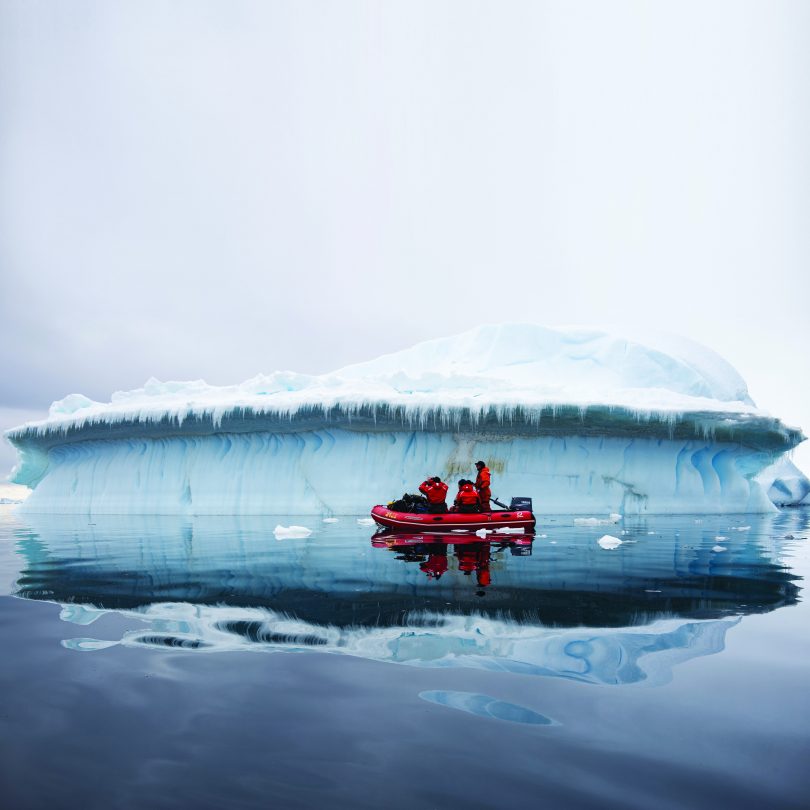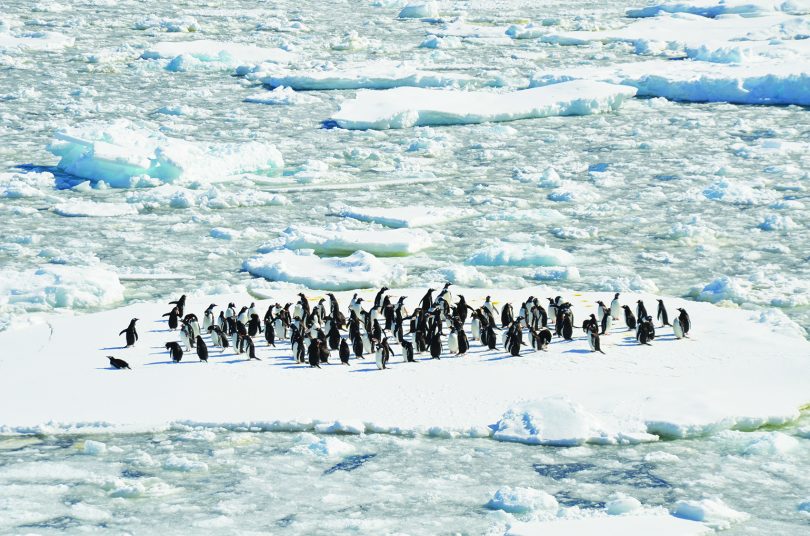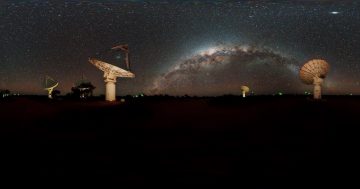
The Southern Lights. Photo: Charles Millen/Australian Antarctic Division.
The timing for the launch of a cool new experience at the National Museum of Australia could not be better.
As Canberra and the surrounding region swelters through another heat wave, chilling out in Antarctica via a groundbreaking virtual reality film is one sure way to find relief, and learn a lot about a continent most of us are unlikely to visit.
The Antarctica Experience takes you to the coldest place on Earth and allows you to walk amongst penguins in their natural habitat, gaze at the brilliant colours of the Southern Lights, see frozen ice fields from the cockpit of a soaring helicopter and land on remote glaciers.
Visitors will experience life as a researcher and scientist, cruising icy waters on a tour of secluded bays, extracting frozen core samples from the solid ground, and have exclusive behind-the-scenes access to one of Australia’s permanent research stations in Antarctica.
Equipped with headsets, visitors will marvel at the remarkable sights of Antarctica with simultaneous vision and theatrical surround sound.

Photo: Charles Millen/Australian Antarctic Division.
The film is the creation of Perth-based explorer, producer, director and writer Briege Whitehead and BAFTA award winner, Phil Harper, who used the latest technology and 4K high-resolution images to capture the ice-covered continent.
The Antarctica Experience Trailer from Blizzard Road Productions on Vimeo.
Whitehead had always been fascinated by the white continent and it was while she was living in Canada that she realised how important it was to the rest of the planet and that Australians were at the forefront of leading the innovation, research and science that comes out of Antarctica, especially the work on climate change.
“I knew that to really experience Antarctica for yourself and to see that climate changing in front of your eyes, people would need to go there but not everyone could nor would you want everyone to go there either,” she said.
“So when virtual reality started to become much more prevalent, and the technology was growing, for me this is how you can transport people to somewhere like Antarctica so they can see all of the science, and the beauty and the fragility of it all for themselves.”
Passionate about natural history and the environment, Whitehead also knew that people were moved when they experienced something for themselves.
“With virtual reality, you get a much more intimate experience, and even if we can suspend for one second, people feeling like they’re truly there, then that’s much more than you would get from one documentary,” she said.
Her idea developed into a pitch to the Australian Antarctic Division media program, which sends only one media company a year to Antarctica, but quickly won the support of a range of organisations including the WA Museum, ScreenWest, Lotterywest, and Screen Australia.
Visual effects giant DNEG (think Marvel and Harry Potter), offered their services, and Warner Brothers provided facilities in Los Angeles to create the 360-degree soundscape for an immersive and linked experience so everyone is synchronised at the same time, and also for an individual headset wearer, so that when you hear a penguin over your shoulder you can turn around and it’s there.
It helped that the idea was bristling with world-firsts, such as setting off drones with 360 cameras over glaciers and capturing 24 hours of daylight in one shot that rotates around your head.
“Antarctica speaks for itself and we were doing something that hadn’t been done before on this scale and in a place that hadn’t been captured like this before,” Whitehead said.

Photo: Courtesy: White Spark Pictures, Western Australian Museum, ScreenWest, Lotterywest, Australian Antarctic Program, Screen Australia, DNEG.
Actor David Wenham even lent his voice for some passages of film.
Whitehead said the most confronting section of the film deals with ice core science, which provides a time capsule of past climate on the continent.
“It’s quite comprehensive to see how intricately linked that CO2 and temperature are to one another, and that we’re far higher in both of those things than we’ve ever been in the past 800,000 years,” she said.
The 21-minute duration may seem short but Whitehead said that it had been found to be the optimum length for a VR experience, although a longer interactive version was being produced.
National Museum Director, Dr Mathew Trinca, said he was excited to bring this unique virtual reality experience to Canberra.
“The Museum has a well-earned reputation for embracing new technology and providing innovative ways for our visitors to experience Australian stories. Virtual reality provides a unique opportunity to explore remote regions of the earth that are difficult to access for the average person,” Dr Trinca said.
“Without making the journey, there is no better way to experience Antarctica than through this new immersive documentary. The Antarctica Experience allows visitors to explore the mysterious continent and discover the amazing lives of our Antarctic scientists.”
The Antarctica Experience comes to Canberra after a premiere, sell-out season at the WA Maritime Museum in Perth, and will be on show at the NMA until the end of June 2019. Bookings are essential. Click here for further information.
Original Article published by Ian Bushnell on the RiotACT.





